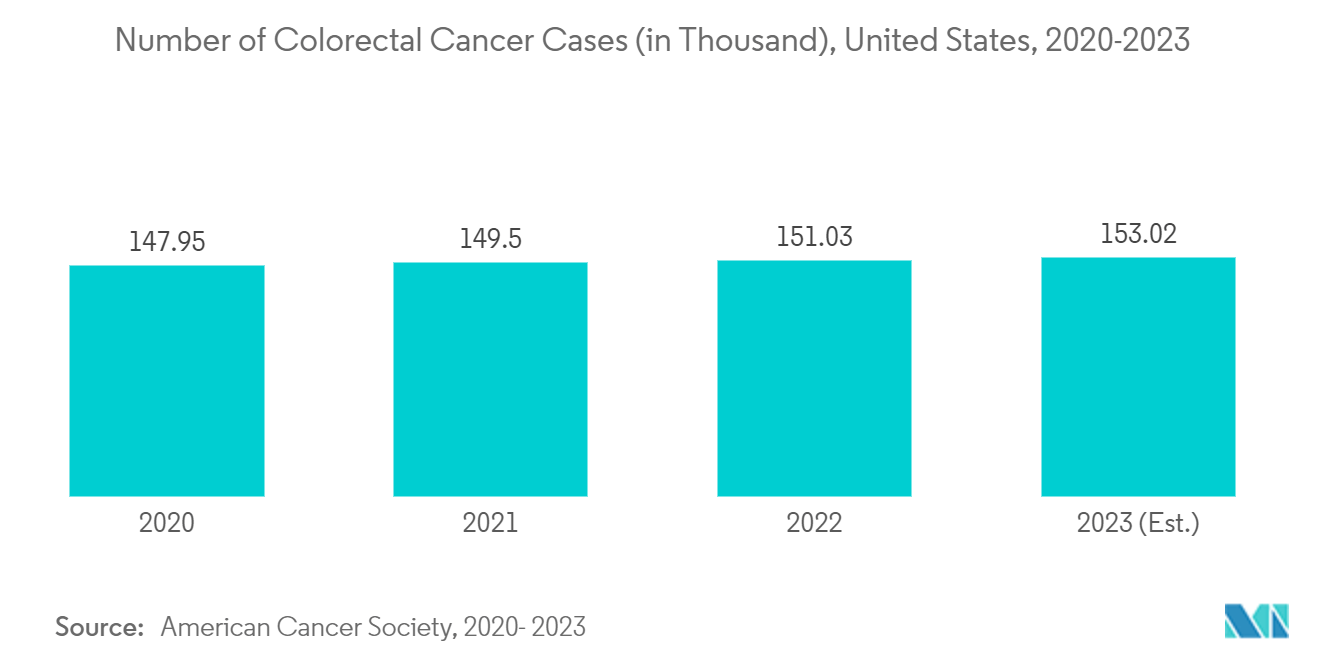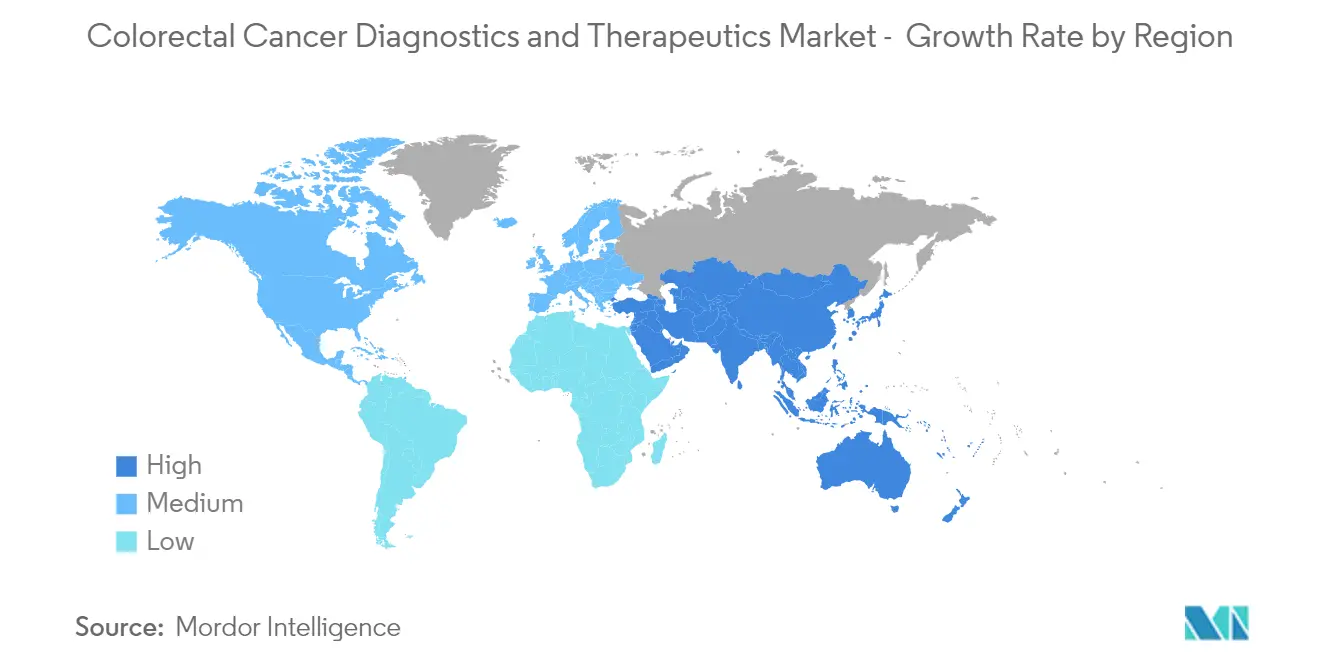Market Trends of Colorectal Cancer Diagnostics and Therapeutics Industry
Colonoscopy Segment is Expected to Observe a Significant Growth During the Forecast Period
- A colonoscopy examines changes such as swollen, irritated tissues, polyps, or cancer in the large intestine (colon) and rectum. A colonoscopy helps the physician explore possible causes of abdominal pain, rectal bleeding, chronic diarrhea, and other intestinal problems. The advantages of colonoscopy are also expected to boost the demand for devices over the forecast period.
- For instance, according to an article published by Elsevier in 2021, colonoscopy is preferred to sigmoidoscopy because it enables examination of the entire colon and is superior to double-contrast barium enema (BE) because it has enhanced diagnostic accuracy as well as therapeutic capability. This diagnostic superiority has been demonstrated in patients with known polyps and symptomatic patients with negative findings on proctosigmoidoscopic and BE examinations. Thus, the effectiveness of colonoscopy is expected to increase the demand and drive segmental growth.
- Several companies are adopting various strategies, such as product launches, acquisitions, and partnerships, to grow their presence in the market. For instance, in April 2021, Fujiflim launched G-EYE 700 Series Colonoscope. G-EYE is a technology developed by Smart Medical to assist with visualization, stabilization, and control during routine examinations.
- Additionally, in November 2021, Cosmo Pharmaceuticals NV reported topline results from a randomized, international, multi-center study evaluating the safety and efficacy of the artificial intelligence (AI) device GI Genius to aid the detection of colorectal polyps in combination with colonoscopy. This study provides a vast experience of using the device in clinical settings. The results show how effective GI Genius is in reducing the percentage of adenomas and polyps that go undetected during white light colonoscopy.
- Such developments are likely to boost market growth over the forecast period. Hence, due to the effectiveness of colonoscopy and demand for colonoscopy, the segment is anticipated to grow during the forecast period.

North America is Expected to hold a Significant Growth in Market Share During the Forecast Period
- The North American colorectal cancer diagnostics and therapeutics market is projected to grow significantly. The growth is attributed to increasing colorectal cancer, healthcare infrastructure, and high awareness about diagnostic testing and devices in healthcare. For instance, according to the American Cancer Society, 2023 updates, colorectal cancer is the third most common cancer diagnosed in the United States. There will be an estimated 106,970 new cases of colon cancer and 46,050 cases of rectal cancer diagnosed in the United States in 2023.
- Furthermore, the American Society of Clinical Oncology article updated in May 2022, reported that the average age at the time of diagnosis for colon cancer in men is 68 years and that for women is 72 years, while for rectal cancer, it is age 63 years for both men and women in the United States.
- Also, according to the United States Census Bureau 2022, more than 56 million adults ages 65 and older live in the United States, accounting for about 16.9% of the nation's population. Thus, the high incidence of colorectal cancer coupled with an increase in the population over 50 years of age is expected to increase the demand for its diagnosis and treatment, driving the studied market.
- Furthermore, key market players' new product developments and launches boost the studied market. For instance, in December 2021, the Food and Drug Administration (FDA) granted fast-track designation to Isofol Medical AB. for Arfolitixorin (6R-MTHF) for patients with metastatic colorectal cancer (CRC). Arfolitixorin is a stabilized and biologically active form of folate that helps increase 5-fluorouracil (5-FU)-cytotoxicity. As a result, all the above factors will likely contribute to this region's strong growth over the forecast period.


